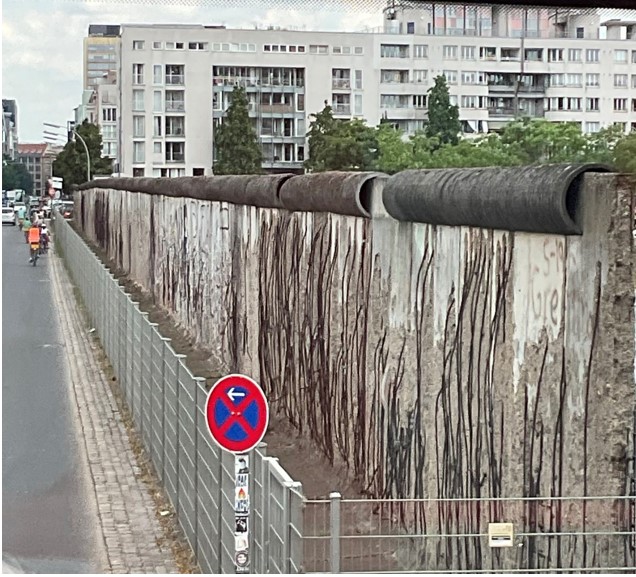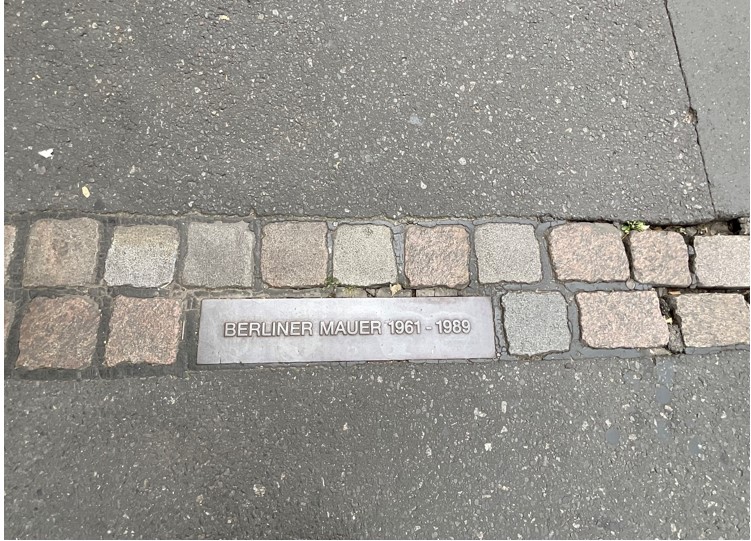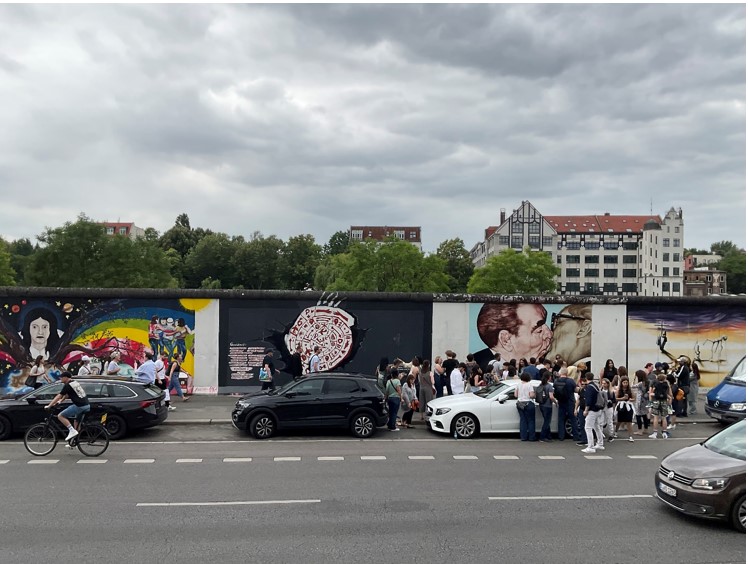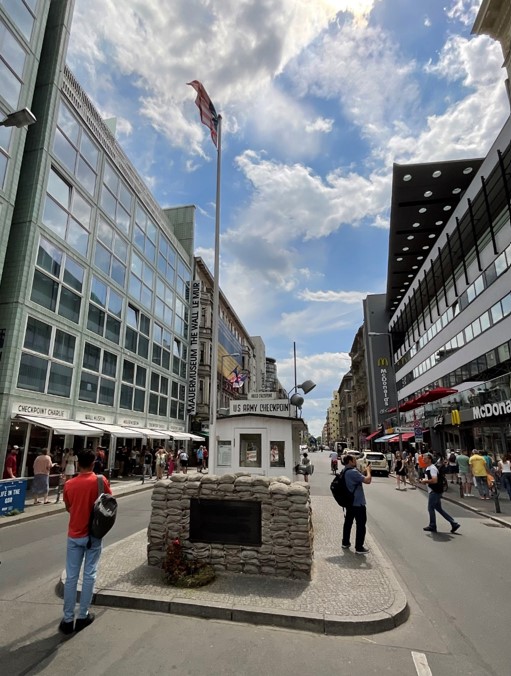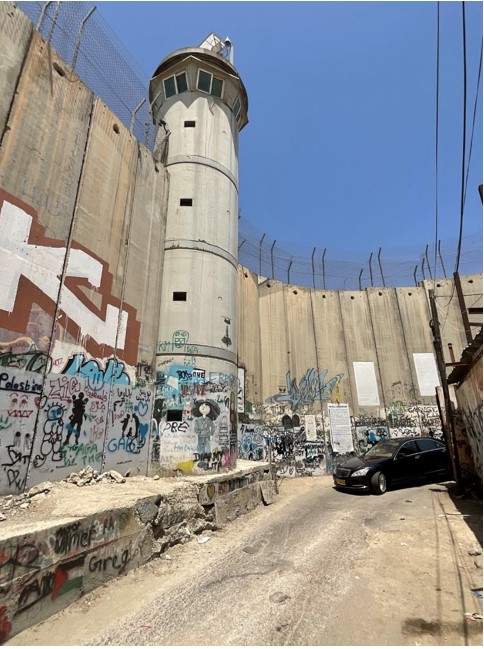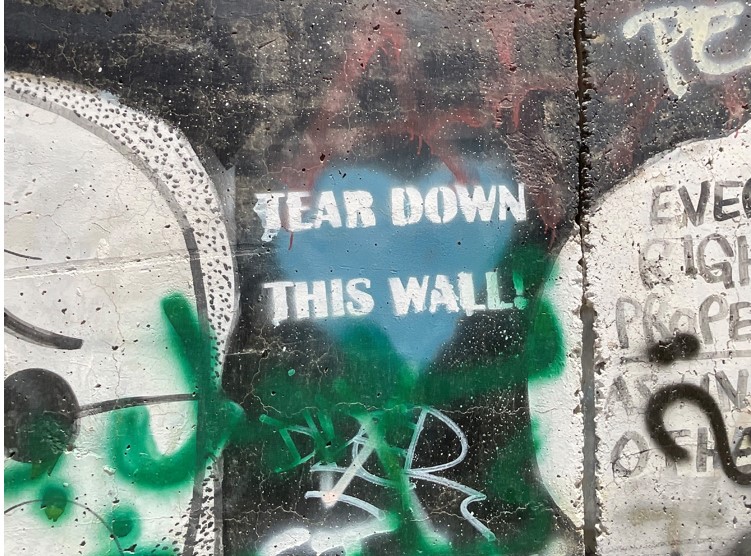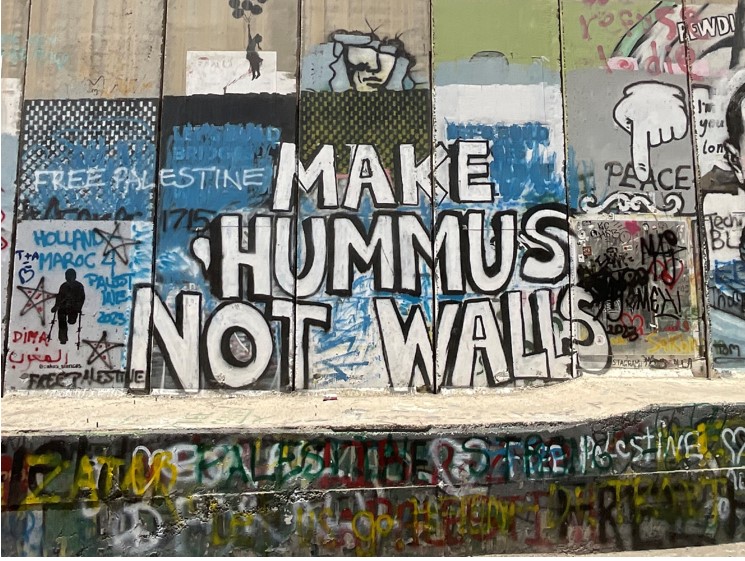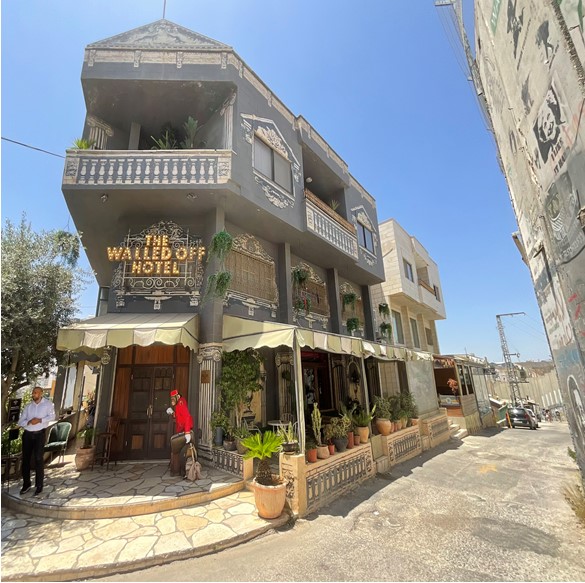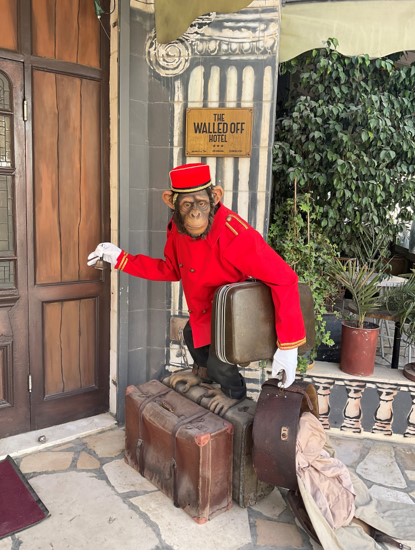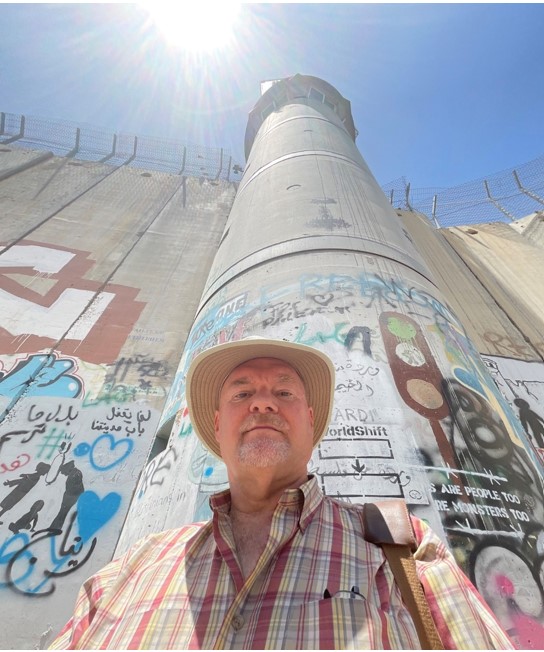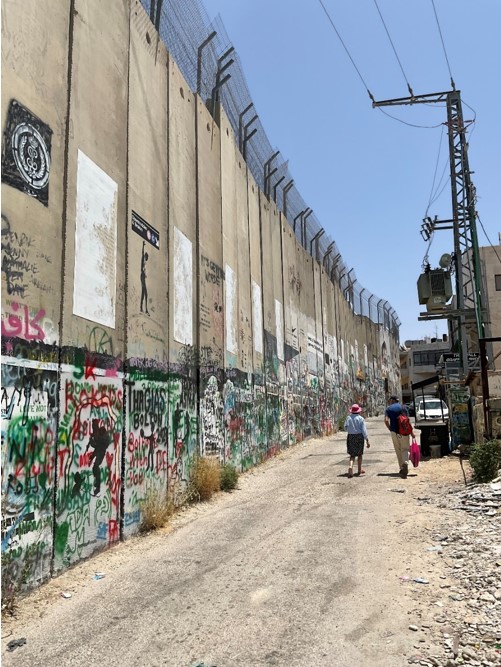A Letter from Doug Dicks, serving in Israel and Palestine
Fall 2023
Write to Doug Dicks
Individuals: Give to E132192 in honor of Doug Dicks’ ministry
Congregations: Give to D500115 in honor of Doug Dicks’ ministry
Churches are asked to send donations through your congregation’s normal receiving site (this is usually your presbytery)
Subscribe to my co-worker letters
Dear family and friends,
In July, I had a reprieve from the oppressive heat we have been experiencing in the Middle East this year and traveled to Berlin, Germany for a meeting of regional liaisons of the Presbyterian Church (U.S.A.) from both Europe and the Middle East. I departed a few days early, it being the Fourth of July weekend, to take in some sightseeing before getting down to business. My colleagues, Elmarie Parker (Lebanon, Syria and Iraq) and Ellen Smith (Central and Eastern Europe) and I made for good travel companions.
As in Bethlehem, the Berlin Wall and its remnants have become major tourist attractions. In Bethlehem, for example, the wall is oftentimes more visited than the people who live behind it! At least part of the wall that remains in Berlin is a canvas of sorts, featuring artwork. In Bethlehem, the wall has become a canvas of slogans, longings, political viewpoints, and celebrities, to name just a few of the things that have been painted on its surface on the Bethlehem side. On the Israeli side of the wall, it remains mostly sterile, gray and stark. A quick review of history reveals that the Berlin Wall was started on the evenings of August 12 and 13, 1961. Overnight on August 13, 1961, the first stretches of the Berlin Wall appeared through the city. Nearly 200km of barbed wire entanglements and fences were erected, and some form of barricade would remain in place in the city until 1989.According to a website called “History Hit” (Why Was the Berlin Wall Built? | History Hit):
“In 1961 Khrushchev closed the border and ordered the construction of a wall to stop people from leaving. Why was the Berlin Wall built? The brain drain: throughout the 1950s thousands of East Germans had fled to the West through Berlin, leaving behind the harsh political climate and economic hardship of life under communism.”
I would have been less than two years of age, at the time of the construction of the Berlin Wall, so I do not remember much about it, until later years. I’ve seen the footage of the late John F. Kennedy, saying to a crowd in German “Ich bin ein Berliner,” meaning, “I am a Berliner,” as he stood near the wall on the steps of the Rathaus Schoneberg in West Berlin in June of 1963. And who doesn’t recall the late President Ronald Reagan, standing at the Brandenburg Gate in Berlin in 1987, and pleading publicly with then Russian President Mikhail Gorbachev to “tear down this wall.”
“By 17 August, (1961), hard concrete blocks and barriers were being laid down, and the border between West and East Berlin was closely guarded. Land was cleared in the gap between the wall and West Berlin to ensure there was a no man’s land patrolled by dogs and full of landmines, in which defectors and escapees could be spotted and shot as they attempted to flee. There were orders to shoot those who tried to escape on sight.”
“Before long, 27 miles of concrete wall would divide Berlin. For the next 28 years, Berlin would remain a focal point for Cold War tensions and a microcosm of the ideological battles raging between socialism and capitalism in Europe.”
As for the wall surrounding Bethlehem and much of the West Bank, I remember when it was built. It, too, started as coils of razor wire, laid out in a deep, open ditch. It was built, according to Israel, as a means to prevent terrorism and terrorist attacks inside of Israel.
However, this logic implies that anyone living on the Palestinian or West Bank side of the Wall is viewed as a potential threat to the citizens of Israel. If that is the case, then why does Israel continue to allow its citizens to settle in the West Bank, amongst the Palestinian population?
Today, Israel’s separation barrier/wall stands at least 8 meters or 25 feet high, and in some places, even higher. Seven hundred kilometers (435 miles) or 85 percent of the wall is built within the West Bank, rather than running along the internationally recognized 1967 boundary, known as the Green Line.
Palestinians have called the wall a “land grab.”
I do not wish to compare the reasons behind the construction of these walls, except to say that walls are walls, and serve as instruments of separation and division, allowing for the demonization of those living on opposite sides of a wall to perpetuate themselves.
WE are here, and THEY are there. In the case of Israel’s Separation Barrier/Wall, often referred to by Palestinians and others as the Apartheid Wall, all Palestinians are perceived as potential threats and are thereby subjected to a long and rigorous security check at major checkpoints, including the use of sophisticated magnetic ID cards, retina scans, and the like.
Likewise, all Israelis are perceived by Palestinians as soldiers armed with guns, preventing their freedom of movement, most notably to Jerusalem. In the case of Bethlehem, that is only a distance of five short miles.
In Berlin, I witnessed some of 20th century history of a wall that separated and divided people for 28 years, and in Bethlehem, I live behind a wall that also separates and divides and prevents freedom of movement. Today, Israel’s wall has stood for 21 years. I wonder how many more years this wall will stand, before it, too, comes down? God willing, may it be so.
In hope,
Doug
![]() You may freely reuse and distribute this article in its entirety for non-commercial purposes in any medium. Please include author attribution, photography credits, and a link to the original article. This work is licensed under a Creative Commons Attribution-NonCommercial-NoDeratives 4.0 International License.
You may freely reuse and distribute this article in its entirety for non-commercial purposes in any medium. Please include author attribution, photography credits, and a link to the original article. This work is licensed under a Creative Commons Attribution-NonCommercial-NoDeratives 4.0 International License.
